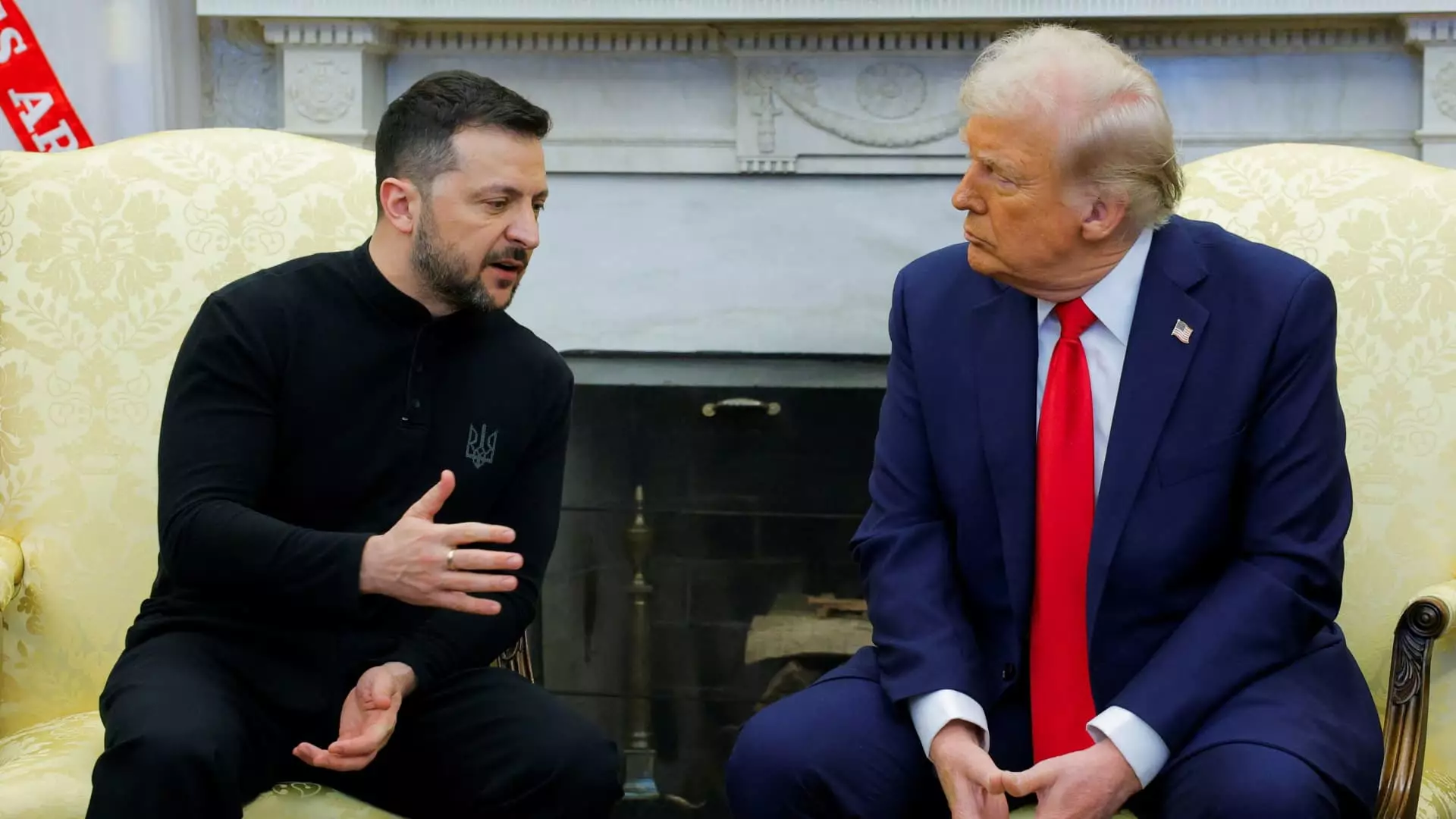In an evocative setting rife with historical significance, U.S. President Donald Trump and Ukrainian President Volodymyr Zelenskyy convened in Vatican City, ostensibly to breathe new life into their beleaguered efforts for peace in Ukraine. However, this meeting, although painted in the hues of optimism, also emerged against a backdrop of skepticism and political maneuvering. Zelenskyy characterized the encounter as potentially historic, while Trump’s administration labeled the discussions as “very productive.” Despite the hopeful rhetoric, one must question whether this diplomatic tango truly stands a chance of facilitating meaningful progress, or if it merely serves as a fleeting spectacle against the persistent aggression of Moscow.
Symbolism Meets Reality
The Vatican’s marble interiors, steeped in centuries of diplomacy and peace-making, served as a striking backdrop for this unprecedented meeting between the two leaders. For Zelenskyy, who has portrayed himself as the underdog in a dire battle for his nation’s survival, the optics of such a meeting with Trump were undoubtedly significant. The image of two leaders leaning towards one another, devoid of aides and distractions, could symbolize the crux of diplomacy: personal relationships bearing the weight of national interests. Yet, it raises the question: are such symbolic gestures enough to overcome the entrenched hostilities fueled by decades of geopolitical dynamics?
While Zelenskyy expressed optimism regarding discussions of ceasefires and protection for the lives of civilians, the reality is tinged with profound complexity. Trump’s penchant for high-stakes, impulsive negotiations raises alarms. His previous comments and actions have at times destabilized rather than stabilized international relations. The peace he seeks might very well require more than optimistic sound bites and heartfelt promises; it necessitates a commitment to addressing the underlying grievances that have fueled this unrelenting conflict.
A Fractured Relationship
The backdrop of discontent is impossible to ignore. The relationship between Trump and Zelenskyy has been anything but smooth. Their prior Oval Office meeting featured Trump hurling accusations, framing Zelenskyy as a risk to international stability. This charges the environment with a palpable tension that clouds today’s diplomatic overtures. Recent events suggest that, while necessity may drive these leaders together, mutual trust remains elusive.
Zelenskyy’s choice of casual attire, a military-style jacket, instead of the customary suit, sends a strong message. It is a visual reiteration of solidarity with the Ukrainian populace enduring the ravages of war. Nevertheless, it also signals an awareness of the perception around him, especially in the context of a leader who has previously faced criticism for his demeanor in the Oval Office. The psychological undercurrents at play are substantial; perception shapes reality, particularly in the world of high-stakes diplomacy.
Negotiating Between Scattershot Demands
At the crux of these discussions lies an array of contentious issues that hamper progress. The stark differences in viewpoints regarding Crimea are particularly revealing. The Trump administration’s suggestion that Crimea be legally recognized as Russian territory has ignited fierce debates, not just between Ukraine and Russia, but also among supportive allies in Europe. These divergent views illuminate the complexity of ending the conflict. Zelenskyy faces pressure from Trump, who has signaled an unwillingness to continue negotiations without substantial concessions from Kyiv. This imbalance positions Zelenskyy in an untenable situation: compromising national integrity in pursuit of immediate peace.
As Ukraine aims for a reliable peace, much rests on how effectively both leaders can translate their aspirations into actionable commitments that recognize the legitimate concerns of all parties involved. Peace requires genuine engagement, and abandoning the current aggressive posturing would be necessary for laying down a foundation of trust. The recent reports highlighting fissures between Washington’s and Kyiv’s positions only serve to underscore the fragility of any gains made in Rome.
The Broader Implications
The interplay between Trump’s ambitions and Zelenskyy’s desperation speaks volumes about global leadership in times of crisis. Political chess is being played on a grand scale, risking casual disregard for the human cost of conflict. While the world watches, the stakes could not be clearer; a failed diplomatic initiative in Rome could lead to escalated tensions and loss of life in Ukraine.
Zelenskyy’s negotiations reflect not only a fight for national survival but a broader struggle for a progressive reintegration of Ukraine into the European fold. The craven calculations of political leaders should not sideline the Ukrainian people’s plight, nor should they lead to a compromised resolution that sacrifices long-term stability for short-term gain.
In this perilous dance of diplomacy at the Vatican, the hope for peace seems almost tangible yet remains dangerously distant. The ability to convert symbol-laden meetings into tangible resolutions will define not only the future of Ukraine but also the role of leaders who, in their pursuit of peace, often risk forgetting the human stories behind the headlines of war.


Leave a Reply